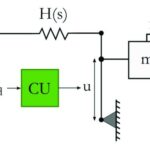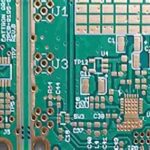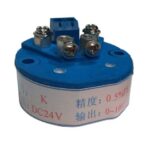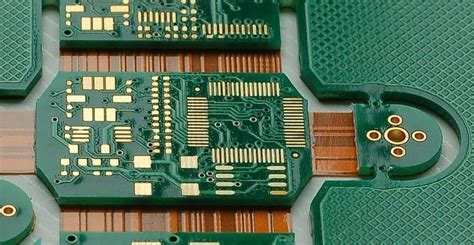What is a Rigid-Flex PCB?
A Rigid-Flex PCB, also known as a flexible printed circuit board, is a hybrid of rigid and flexible PCB technologies. It combines the stability and durability of a rigid PCB with the flexibility and versatility of a flex circuit. This unique combination allows for the creation of complex, three-dimensional designs that can be folded, twisted, or bent to fit into tight spaces or conform to unique shapes.
Rigid-Flex PCBs consist of multiple layers of flexible substrate material, typically polyimide or polyester, which are laminated together with adhesive. The Outer Layers are usually made of a rigid material, such as FR-4, which provides structural support and protection for the flexible layers. Conductive traces are printed onto the flexible layers, allowing for electrical connectivity between components.
Advantages of Rigid-Flex PCBs
- Space savings: Rigid-Flex PCBs can be designed to fit into tight spaces and conform to unique shapes, reducing the overall size and weight of the device.
- Increased reliability: By eliminating the need for connectors and cables between rigid sections, Rigid-Flex PCBs reduce the risk of connection failures and improve overall reliability.
- Enhanced signal integrity: The continuous traces on a Rigid-Flex PCB minimize signal loss and interference compared to traditional wire connections.
- Improved thermal management: Flexible substrates can be designed to dissipate heat more effectively than rigid boards, enhancing thermal management in the device.
- Reduced assembly time: Rigid-Flex PCBs simplify the assembly process by reducing the number of interconnects and connectors required, saving time and costs.
Rigid-Flex PCB Structure
A typical Rigid-Flex PCB consists of several layers, each serving a specific purpose. The number of layers and their arrangement can vary depending on the design requirements. Here’s a breakdown of the common layers found in a Rigid-Flex PCB:
- Rigid layers: These are the outermost layers, typically made of FR-4 material. They provide structural support and protection for the flexible layers.
- Flexible layers: Made of polyimide or polyester, these layers contain the conductive traces that carry electrical signals. They are laminated together with adhesive and can be bent or folded as needed.
- Adhesive layers: These layers bond the flexible and rigid sections together, ensuring a strong and reliable connection.
- Coverlay: A protective layer applied to the outer surfaces of the flexible sections to prevent damage and provide insulation.
- Stiffeners: Additional rigid layers can be added to specific areas of the flexible sections to provide extra support or to create a transition zone between the rigid and flexible sections.
Here’s a table summarizing the layers in a Rigid-Flex PCB:
| Layer | Material | Purpose |
|---|---|---|
| Rigid | FR-4 | Structural support and protection |
| Flexible | Polyimide or Polyester | Contains conductive traces for electrical connectivity |
| Adhesive | Acrylic or Epoxy | Bonds flexible and rigid sections together |
| Coverlay | Polyimide or Photoimageable | Protects and insulates the flexible sections |
| Stiffeners | FR-4 or Polyimide | Provides extra support or creates transition zones |
Rigid-Flex PCB Manufacturing Process
The manufacturing process for Rigid-Flex PCBs is more complex than that of traditional rigid PCBs due to the additional steps required to integrate the flexible layers. Here’s an overview of the key steps involved:
- Design and layout: The PCB Design is created using specialized CAD software, taking into account the unique requirements of the Rigid-Flex structure.
- Material selection: The appropriate materials for the rigid and flexible layers are chosen based on the design requirements and the intended application.
- Flexible layer fabrication: The conductive traces are printed onto the flexible substrate material using a photolithography process. Multiple flexible layers are laminated together with adhesive.
- Rigid layer fabrication: The rigid layers are fabricated using standard PCB manufacturing techniques, such as etching and drilling.
- Lamination: The flexible and rigid layers are laminated together using heat and pressure to form a single, unified structure.
- Drilling and plating: Holes are drilled through the laminated board, and the walls of the holes are plated with conductive material to create electrical connections between layers.
- Coverlay application: The coverlay is applied to the outer surfaces of the flexible sections to provide protection and insulation.
- Surface finishing: The exposed copper traces are coated with a protective finish, such as ENIG (Electroless Nickel Immersion Gold) or OSP (Organic Solderability Preservative), to prevent oxidation and improve solderability.
- Cutting and profiling: The finished board is cut and profiled to the desired shape using a routing machine or laser cutter.
- Testing and inspection: The completed Rigid-Flex PCB undergoes rigorous testing and inspection to ensure it meets the required specifications and quality standards.

Rigid-Flex PCB Cost Considerations
The cost of a Rigid-Flex PCB is generally higher than that of a traditional rigid PCB due to the additional materials, processing steps, and specialized equipment required. Several factors can influence the cost of a Rigid-Flex PCB:
- Number of layers: As the number of layers increases, so does the complexity of the manufacturing process and, consequently, the cost.
- Material selection: The choice of materials for the rigid and flexible layers can impact the cost. High-performance materials, such as polyimide, are more expensive than standard materials like FR-4.
- Board size and shape: Larger and more complex board shapes require more material and processing time, resulting in higher costs.
- Quantity: As with most PCBs, ordering larger quantities can lead to lower per-unit costs due to economies of scale.
- Design complexity: Highly complex designs with fine pitch traces, small vias, or tight tolerances may require specialized equipment and processes, increasing the overall cost.
- Turnaround time: Faster turnaround times often come with a price premium, as manufacturers may need to prioritize your order over others or use expedited shipping methods.
Here’s a table comparing the relative costs of different PCB Types:
| PCB Type | Relative Cost |
|---|---|
| Single-layer | $ |
| Double-layer | $$ |
| Multi-layer | $$$ |
| Rigid-Flex | $$$$ |
It’s essential to work closely with your chosen PCB Manufacturer to optimize your design for cost-effectiveness while still meeting your performance and reliability requirements.
Choosing a Rigid-Flex PCB Manufacturer
Selecting the right manufacturer for your Rigid-Flex PCB project is crucial to ensure a high-quality, reliable product. Here are some key factors to consider when choosing a Rigid-Flex PCB manufacturer:
- Experience and expertise: Look for a manufacturer with a proven track record of producing high-quality Rigid-Flex PCBs. They should have experience with a wide range of materials, designs, and applications.
- Quality certifications: Ensure that the manufacturer holds relevant quality certifications, such as ISO 9001, AS9100, or IPC Class 2 or 3, depending on your industry and application requirements.
- Technical support: Choose a manufacturer that offers comprehensive technical support throughout the design and manufacturing process. They should be able to provide guidance on material selection, design optimization, and testing.
- Manufacturing capabilities: Verify that the manufacturer has the necessary equipment and processes in place to handle your specific Rigid-Flex PCB requirements, such as the number of layers, material types, and finishing options.
- Turnaround time: Consider the manufacturer’s standard turnaround times and their ability to accommodate rush orders if needed.
- Pricing and minimum order quantities: Compare pricing and minimum order quantities among potential manufacturers to ensure they align with your budget and production needs.
- Customer support and communication: Choose a manufacturer that is responsive, communicative, and easy to work with. They should keep you informed throughout the manufacturing process and be available to address any concerns or questions you may have.
Frequently Asked Questions (FAQ)
-
What is the difference between a Rigid-Flex PCB and a standard flexible PCB?
A Rigid-Flex PCB combines both rigid and flexible layers, allowing for a more compact and reliable design compared to a standard flexible PCB, which consists only of flexible layers. -
Can Rigid-Flex PCBs be used in high-temperature applications?
Yes, Rigid-Flex PCBs can be designed for high-temperature applications by using appropriate materials, such as polyimide, which can withstand temperatures up to 260°C. -
How do I choose the right materials for my Rigid-Flex PCB?
The choice of materials depends on your specific application requirements, such as temperature range, flexibility, and electrical performance. Consult with your PCB manufacturer to select the most suitable materials for your project. -
Are Rigid-Flex PCBs more expensive than traditional rigid PCBs?
Yes, Rigid-Flex PCBs are generally more expensive than traditional rigid PCBs due to the additional materials, processing steps, and specialized equipment required. -
How long does it take to manufacture a Rigid-Flex PCB?
The manufacturing time for a Rigid-Flex PCB can vary depending on the complexity of the design, the chosen materials, and the manufacturer’s workload. Typical lead times range from 2-6 weeks, but expedited options may be available for an additional cost.
In conclusion, Rigid-Flex PCBs offer a unique combination of flexibility and stability, enabling the creation of compact, reliable, and high-performance electronic devices. By understanding the structure, manufacturing process, cost considerations, and how to choose the right manufacturer, you can effectively incorporate Rigid-Flex PCBs into your projects and take advantage of their many benefits.









